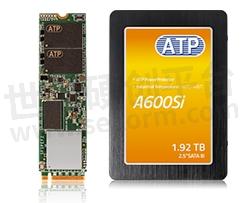What Are the Common SSD Myths?

Common SSD Myths
Several misconceptions surround the use of solid state drives (SSDs).What are the most common myths or misconceptions about SSDs, and how true are they?

The Durability Myth: SSDs Do Not Last Long
SSDs do wear out, just like any other storage solution such as the HDD. However, flash technology has advanced by leaps and bounds in recent years, and SSDs now employ many endurance-stretching technologies.
One of the measures of SSD endurance is mean-time between failures (MTBF), which is the interval between one failure and the next. MTBF is expressed in hours, and most industrial SSDs have ratings between 2 million hours (about 228 years), or 5 million hours or 570 years. Other ways to measure endurance include Terabytes Written (TBW), which refers to the total amount of data that can be written on the SSD during its entire usage life, and program/erase (P/E) cycle, which is the number of times data can be written to or erased from an SSD. One TB is equivalent to 1000 GB, so while it is true that SSDs can only handle a limited number of writes, they do write several terabytes of data, which is a lot. ATP 2.5" SSDs, for example have maximum TBW ratings of up to 21,333 TB while M.2 SATA 2280 embedded SSD modules have up to 17,066 TB. Powerful controllers, advanced wear leveling techniques, and over-provisioning technologies ensure that SSDs can operate reliably for many years.
The NAND Flash Type Myth: Only SLC is Suitable for Industrial Applications
In its earlier years, SSD reliability and endurance were largely determined by flash type. These days, however, breakthrough firmware algorithms have enabled other flash types to come up to par with near-SLC performance at more accessible price points. Carefully screened components at IC level, along with stringent validation and testing processes all contribute to the quality of flash products that make them suitable for harsh environments and demanding operating conditions that are typical in industrial applications. ATP SSDs with industrial temperature ratings are designed to operate dependably in extremely cold or hot environments. The rugged design also ensures protection against dust, humidity, vibration/shock and other external elements.
The Cost Myth: SSDs are Too Expensive
When SSDs were first introduced, they were priced so much higher than HDDs. However, flash memory technology has already matured, and prices are falling and achieving near parity with HDDs. Over the long-term, SSDs can narrow the price difference through other factors that lead to lower total costs. SSDs do not have movable or mechanical parts, so they can withstand strong shocks and vibrations without any functional interruption or danger of data loss, translating to fewer costly service calls and less drive replacements. Faster data access leads to greater productivity, and lower power consumption generates substantial power savings.
The Size Myth: SSDs are Not Big Enough
When choosing a storage solution, capacity is almost always among the top considerations. For data-hungry applications, the advent of 3D NAND technology is a welcome boost. By stacking memory cells vertically, 3D NAND technology is able to achieve higher densities at lower costs per bit. Leading 3D NAND flash storage manufacturers have successfully stacked up to 64-layer NAND and there are plans to release products based on 128-layer NAND soon. ATP NAND flash products based on 3D NAND technology feature high capacities at lower costs per bit. Along with ATP's die packaging technology and integrated solutions for sustaining data integrity and drive reliability, 3D NAND solutions expand SSD capabilities beyond planar technology.
The Management Myth: SSD Management is Complicated
SSDs write and erase data differently from HDDs. The basic unit for storing data on an SSD is a page; several pages make up a block. To write new data on pages where old data (data marked for deletion) resides, valid pages need to be relocated and the entire block has to be deleted. The process of constant moving and relocating data is called garbage collection. ATP SSDs with the TRIM command can perform garbage collection on a page level instead of managing whole blocks, thereby reducing write amplification and increasing SSD endurance. The TRIM function ensures optimum performance and better endurance.
Another way to ease SSD management is ATP's Life Monitor/S.M.A.R.T. Tool which provides a user-friendly interface for monitoring the health status and life expectancy of a flash product.
The Speed Myth: SSDs Only Offer Speed Advantage for HPC Applications
A big advantage of SSDs over HDDs is its speed. Having no mechanical parts, SSDs can access data fast and boot up a system in seconds for greater productivity, especially in high-performance applications. Some industrial or embedded applications that do not require such high performance or speed can benefit from SSDs with small footprints, low power and even low capacities, which are enough to boot embedded operating systems. Embedded SSDs come in a variety of form factors and capacities that can meet various operating requirements and environments. ATP's M.2, mSATA, and SlimSATA SSDs as well as industrial USB drives come in ultra-lean small factors of various capacities to meet high-performance as well as industrial and embedded application requirements.
Conclusion
Contrary to common misconceptions, SSDs offer significant advantages, offering performance boosts as well as high endurance, extraordinary reliability and long usage life. Mission-critical industrial applications will benefit greatly from ATP SSD's ability to withstand tough environments, heavy workloads and better ROI in the long run.
- +1 Like
- Add to Favorites
Recommend
- Apacer Launches AS2280Q4U M.2 Gen4 x4 SSD for PS5 with 7400/7000MB/s Read/Write Speeds
- How Over-Provisioning Can Benefit SSD Performance SSDs
- Apacer‘s Latest Industrial PCIe Gen4 x4 SSD Supports Continuous Read/Write Speeds of 5080/4735MB/s
- The Importance of Crystal Oscillator in SSD, This Article will Let You Understand in Seconds!
- FORESEE XP2300 PCIe SSD: A Flagship Solution Leading the AI PC Memory Revolution
- Apacer‘s SV25T Transformed SSD Is a Quick and Easy Way to Adopt OOB Technology For Organizations Interested In Improving ESG Compliance
- The First FORESEE Large-capacity SSD for Vehicle-mounted Monitoring Systems Supports 24-channel High-definition Recording
- ATP Rapid Diagnostic Test (RDT): Accelerating Failure to Maximize Reliability and Endurance
This document is provided by Sekorm Platform for VIP exclusive service. The copyright is owned by Sekorm. Without authorization, any medias, websites or individual are not allowed to reprint. When authorizing the reprint, the link of www.sekorm.com must be indicated.





























































































































































































































































































































































































































































































































































































































































































































































































































































































